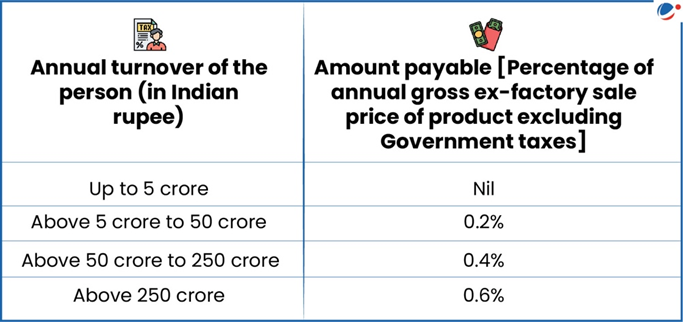Why in the news?
The National Biodiversity Authority has issued new rules — Biological Diversity (Access and Benefit Sharing) Regulation 2025.
More on the news
- The rules seek to regulate how benefits from the use of biological resources and associated knowledge are fairly shared.
- Rules have been notified by the NBA in accordance with the Biodiversity Act (BDA) 2002. These rules have replaced the 2014 rules.
- One of the most well-known ABS cases from India involves the Kani tribal community of Kerala and the Arogyapacha plant (Trichopus zeylanicus), traditionally used by the tribe for its revitalizing properties (Jeevani drug).
About Access and Benefit Sharing (ABS)
|
India's Legal Framework on Access and Benefit Sharing (ABS)
- Background and Purpose: India enacted the Biological Diversity (BD) Act, 2002 in line with its commitment to the Convention on Biological Diversity (CBD) to conserve biological diversity, and ensure sustainable use of its components.
- Scope and Coverage: The BD Act, enacted before the Nagoya Protocol, has a broader scope—covering all biological resources within India.
- In contrast, the Nagoya Protocol is limited to genetic resources.
- Implementation:
- India implements ABS through a three-tier system: the National Biodiversity Authority (NBA) at the central level, State Biodiversity Boards (SBBs) at the state level, and Biodiversity Management Committees (BMCs) at the local level.
- These statutory bodies manage access, benefit sharing, and distribution under the Biodiversity Act.
Key Highlights of the Rules

- Inclusion of Digital Sequence Information (DSI):The rules will now guide the sharing of benefits for the use of biological resources, including Digital Sequence Information (DSI) or knowledge associated with DSI:
- DSI: It is a policy term for digital representations of genetic resources, including genomic data like DNA, RNA, and protein sequences.
- Prior Informed Consent (PIC): Person/industry intending to access biological resources shall give prior intimation to the NBA for approval.
- This shall not apply in case of access to cultivated medicinal plants notified under BDA 2002.
- Quantum of Benefit Sharing: Rules delineate slabs based on annual turnover of person/industry. (see table).
- All users with annual turnover of over 1 crore need to share a statement with information on the resources used per year.
- Benefit Sharing for High-Value Biological Resources: For biological resources having high conservation or economic value, the benefit sharing shall not be less than 5% of the proceeds of the auction or sale amount or the purchase price and could be more than 20% in case of commercial use.
- E.g. red sanders, agarwood, etc.
- Transfer of Research Results (Non-IPR Use): If research results (based on biological resources or traditional knowledge) are shared or transferred, the applicant must share monetary or non-monetary benefits with the National Biodiversity Authority (NBA), as mutually agreed.
- Benefit Sharing for IPR Commercialisation: If a person commercializes a product based on IPR developed using biological resources, they must share a monetary benefit up to 1% of the annual gross ex-factory sale price (excluding taxes), depending on the sector and case specifics.

Challenges with Implementation
- Transboundary Nature of Resources: Genetic resources and traditional knowledge often exist across political borders, making it difficult to obtain prior informed consent (PIC) or fairly share benefits among multiple stakeholders.
- Weak Capacity: There is insufficient human and institutional capacity to implement the Convention on Biological Diversity (CBD), its protocols, and national biodiversity laws effectively.
- Limited Recognition of Customary Law: Customary laws that govern traditional knowledge are not adequately integrated into formal legal systems or intellectual property (IP) frameworks. This limits the protection and recognition of indigenous governance systems.
- Cumbersome Documentation Process: Documenting biodiversity and associated knowledge (e.g., through People's Biodiversity Registers) is time-intensive and technically complex, though essential for legal protection and benefit-sharing.
- Academic vs Commercial Research :It is difficult to distinguish between academic research and commercially motivated studies, leading to potential misuse of exemptions under the law and bypassing of benefit-sharing requirements.
- Lack of a Robust Market System: Long and inefficient value chains reduce the financial returns to local communities.
- Monitoring Issues: Multiple government agencies and overlapping mandates lead to poor coordination and enforcement of ABS regulations .
- Low Awareness: Public understanding of the Convention on Biological Diversity (CBD), Nagoya Protocol, and Biological Diversity Act, 2002 remains low.
Way Ahead
- Multilateral Benefit-Sharing: Develop a global mechanism for fair sharing across borders, in line with Nagoya Protocol.
- Empower Indigenous Communities: Legally recognize customary laws and integrate them into ABS frameworks.
- Digitize Documentation: Use technology to speed up PBR creation, ensuring protection and transparency.
- Clarify Research Use: Set clear rules distinguishing academic from commercial research to prevent misuse.
- Improve Monitoring: Establish a centralized digital platform linking NBA, SBBs(state Biodiversity boards) and BMCs (Biodiversity Management Committees) for real-time compliance tracking.



